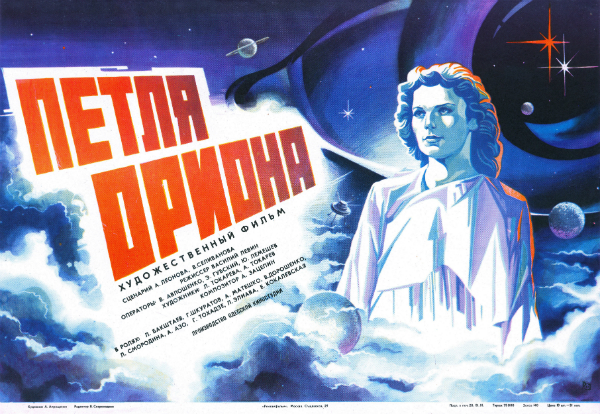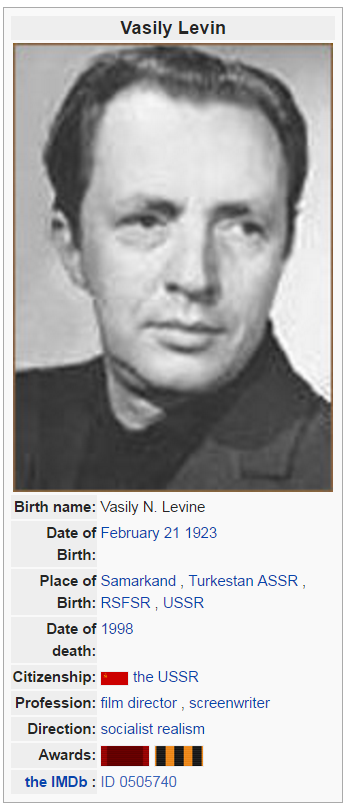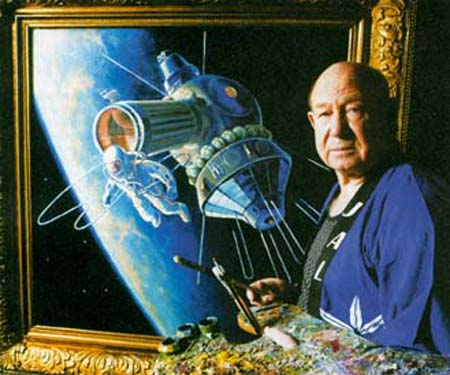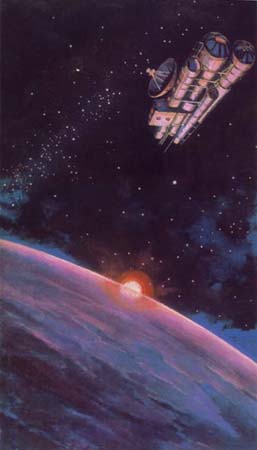Introdução por cientistas, inédita no cinemaEste tópico tem sido um exercício de como falar de um filme que não presta, de forma interessante. No fundo o tópico deverá ser visto como um documentário e curiosidade, e nunca como uma sugestão de cinema.
Este filme possui uma série de entrevistas, na sequência de abertura, tratam-se mesmo dos melhores cientistas e cosmonautas da União Soviética, a darem a sua opinião acerca de vida extra-terrestre. Eu irei mostrar essa sequência, legendada em inglês para todos verem, mas antes terei de identificar e apresentar cada um dos cientistas, para poderem dar valor.
Pela ordem em que cada especialista surge...

Este é o consultor Roald Sagdeev, já referido numa mensagem anterior, no filme irá surgir assim:

De seguida irá surgir o cosmonauta Vitaly Sevastyanov:

O que dizer sobre ele...?
Recebeu as seguintes honras:
Twice Hero of Soviet Union (Decree of the Supreme Soviet of the USSR from on July 3 1970 , and on July 27 1975 );
two Orders of Lenin (3 July 1970 and 27 July 1975);
the medal "For Valiant Labor. To commemorate the 100th anniversary of Lenin's birth " (1970);
Order "Necklace of the Nile" ( United Arab Republic , 1970);
Order of Holy Prince Daniel of Moscow II degree ( ROC , 2000 );
gold medal Tsiolkovsky Academy of Sciences of the USSR;
gold medal Gagarin ;
gold medal "For merits in development of science and humankind" ( Czechoslovakia );
Medal of Copernicus Society "Man and Space" (Germany);
the highest award of the International Academy of Astronautics - Prize D. and F. Guggenheim;
honorary diploma behalf VM Komarov and medal de Lavaux (FAI);
USSR State Prize (1978) - for a series of works on medical substantiation and introduction of methods and means of prevention of adverse effects of weightlessness on the human body, provide an opportunity to implement long-term manned space flight;
Lenin Komsomol Award (1978) - for the script of the documentary "Common Space";
State Prize of the Estonian SSR (1979);
Pilot-Cosmonaut of the USSR (1970);
Honored Master of Sports of the USSR (1970);
honorary citizen of the cities of Kaluga , Krasnoural'sk , Gagarin , Sochi , Orsk , Anadyr (Russia); Leninabad , Nurek ( Tajikistan ); Karaganda , Arkalyk , Baikonur ( Kazakhstan ); Borjomi ( Georgia ); Varna ( Bulgaria ); Los Angeles , Houston , Seattle , San Francisco ( USA ).
Medal of the Central Committee of the Communist Party, "90 Years of the Great October Socialist Revolution" ;
gratitude to the President of the Russian Federation ( on March 2 2000 ) - for his great contribution to the establishment and development of national and world space [5].
E no filme surge assim, de fato e gravata, mas com medalhas na sua fatiota:
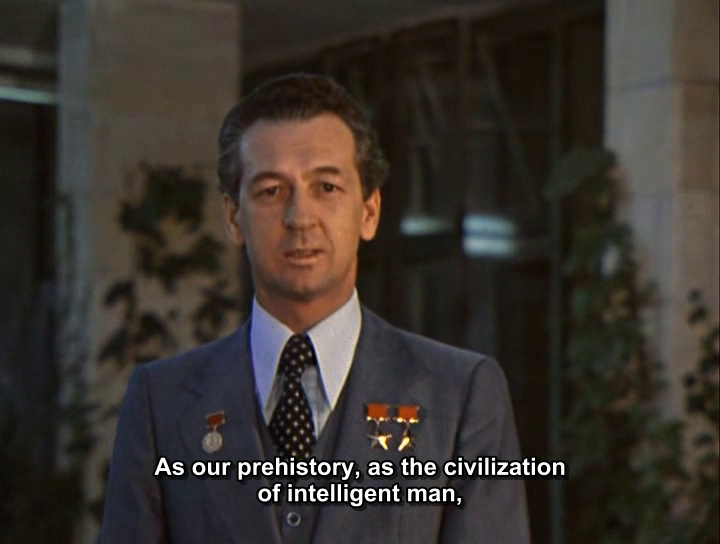
Em terceiro lugar surge um cientista, o Iosif Shklovsky (Zé para os amigos, porque Iosif é José, como o meu nome):

Antes de entrar a matar com o currículo deste homem de ciências, quero referir que o próprio Carl Sagan (o meu ídolo pessoal) fez anotações e traduções de um livro dele "The Universe, life, reason " (1962), de que o escritor polaco Stanislav Lem, da corrente da ficção científica inteligente e filosófica, usou para escrever os seus livros de
ficção (científica).
O homem foi um divulgador de ciências que antecedeu o Carl Sagan...
Aqui fica apenas a sinopse do wikipedia acerca do cientista:
Iosif Shklovsky (June 18, ( July 1 ) 1916 , Glukhov - 3 on March 1985 , Moscow ) - Soviet astronomer , astrophysicist , corresponding member of the Academy of Sciences of the USSR ( 1966 ), winner of the Lenin Prize ( 1960 , for the concept of an artificial comet ), founder of the school of modern astrophysics - department of radio astronomy of the State astronomical Institute. Sternberg (SAI) of Moscow University and the Department of Astrophysics Institute of Space Research, Academy of Sciences of the USSR (now the Astro Space Center ). The author of nine books and over three hundred scientific publications. Also known as the author of works on the problems of the existence of extraterrestrial civilizations and popular science articles. [1]
He graduated from the Faculty of Physics of Moscow State University ( 1938 ). PhD ( 1944 , "The electron temperature in astrophysics") and his doctoral dissertation ( 1949 ) defended at the Department of Astrophysics SAI .
No filme irá aparecer com o seguinte aspecto:

Agora chegamos ao criador do conceito de civilizações do Tipo I, II e III, de que o Professor Michiu Kaku tanto admira, nos seus documentários modernos de divulgação científica.
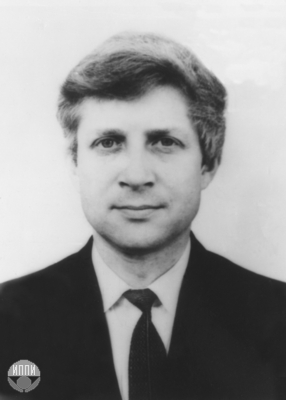
Nikolai Kardashev is a Russian astrophysicist and deputy director of the Space Research Institute of the Academy of Sciences, Moscow, who conducted the first Soviet search for intelligent extraterrestrial signals in 1963. A graduate of Moscow University (1955), Kardashev studied under Shklovskii at the Sternberg Astronomical Institute, from where he obtained his Ph.D. in 1962. The following year he carried out the pioneering Soviet effort in SETI, examining quasar CTA-102. An early advocate of the idea that some alien races may be billions of years ahead of us, he proposed a classification for such supercivilizations (see Kardashev civilizations) and recommended that searches for them concentrate on the infrared and millimeter-wave ranges of the spectrum, rather than the centimeter-wave range.1 In 1963, Kardashev organized a SETI research group at the Sternberg Institute and initiated arrangements for the first All-Union Meeting on extraterrestrial civilizations (see Byurakan SETI conferences).
Fonte:
http://www.daviddarling.info/encyclopedia/K/Kardashev.html
No filme ele irá aparecer com o seguinte aspecto:
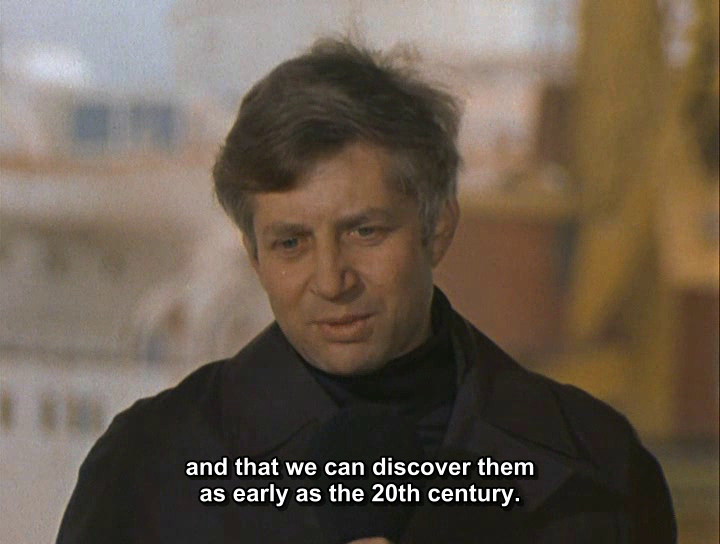
Epá! Com um cientista assim não se brinca, este homem está sempre a ser citado no século XXI, pelo cientista norte-americano Michiu Kaku, a propósito do conceito que ele concebeu:
Nikolai Kardashev speculated that stage of extraterrestrial civilizations of the universe can be classified by the level of energy consumption. He divided all possible civilizations into three groups:
Civilization I type : those who collect planetary energy, making full use of the incident to the planet sunlight. All the energy of the planet is under their control.
Civilization II type: those who fully utilizes the energy of its star, making them 10 billion times more powerful than the type I civilization.
Civilization III types: those who can make use of the energy of an entire galaxy, making them 10 billion times more powerful Type II civilizations. Each of these civilizations colonized billions of star systems and is able to use the energy of the black hole at the center of its galaxy.
Nikolai Kardashev believes that any civilization that energy consumption is growing at a moderate speed (a few percent per year), will rapidly move from one stage to another, such a transition will take her from a few thousand to several tens of thousands of years.Fonte:
https://ru.wikipedia.org/wiki/%D0%9A%D0%B0%D1%80%D0%B4%D0%B0%D1%88%D1%91%D0%B2,_%D0%9D%D0%B8%D0%BA%D0%BE%D0%BB%D0%B0%D0%B9_%D0%A1%D0%B5%D0%BC%D1%91%D0%BD%D0%BE%D0%B2%D0%B8%D1%87
Estamos perante um cientista que merece o nosso respeito...


Finalmente irá aparecer o cosmonauta Alexei Leonov, já atrás abordado, porque foi um co-autor deste argumento.
Aqui está ele, com o seu chapéu militar enorme soviético. Essa farda soviética metia muito medo aos povos da NATO, pelo menos a crianças portuguesas como eu, que foram vítimas de propaganda ideológica norte-americana, durante a década de 80.

E agora sim... já posso mostrar o meu vídeo com legendas em inglês, em que estes cinco senhores são entrevistados acerca da possibilidade de vida extra-terrestre. É assim que o "Orion's Loop" arranca:
Orion's Loop (1981) - Intro from Clips do Zé on Vimeo.
